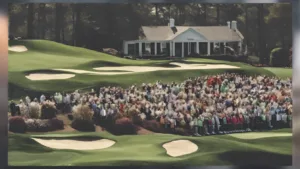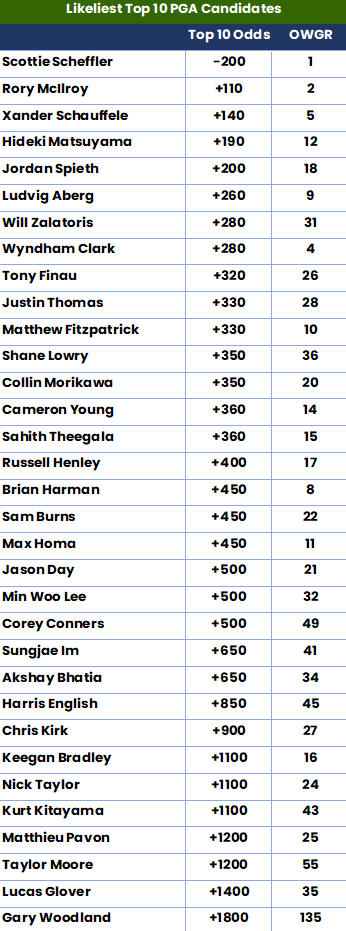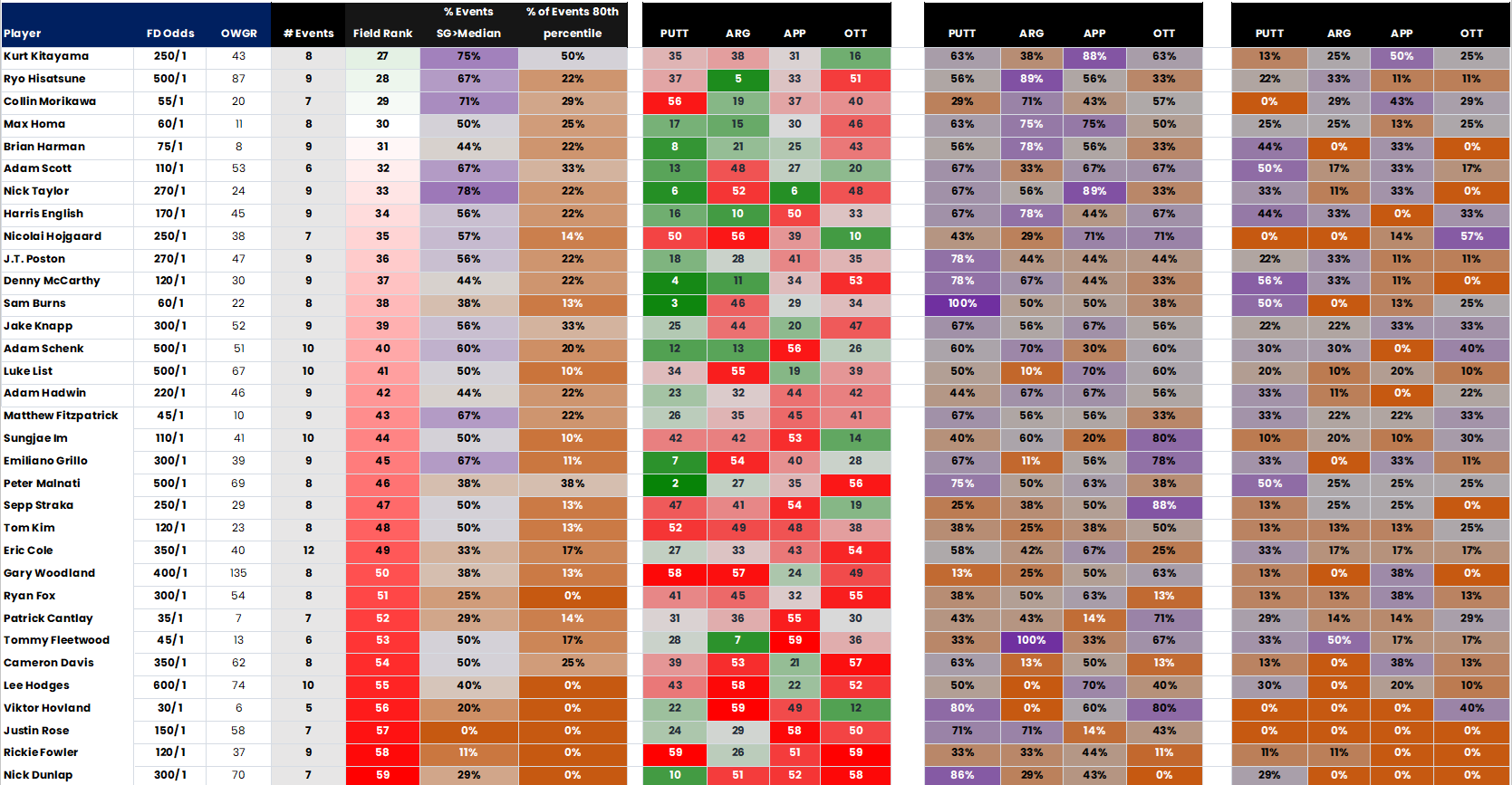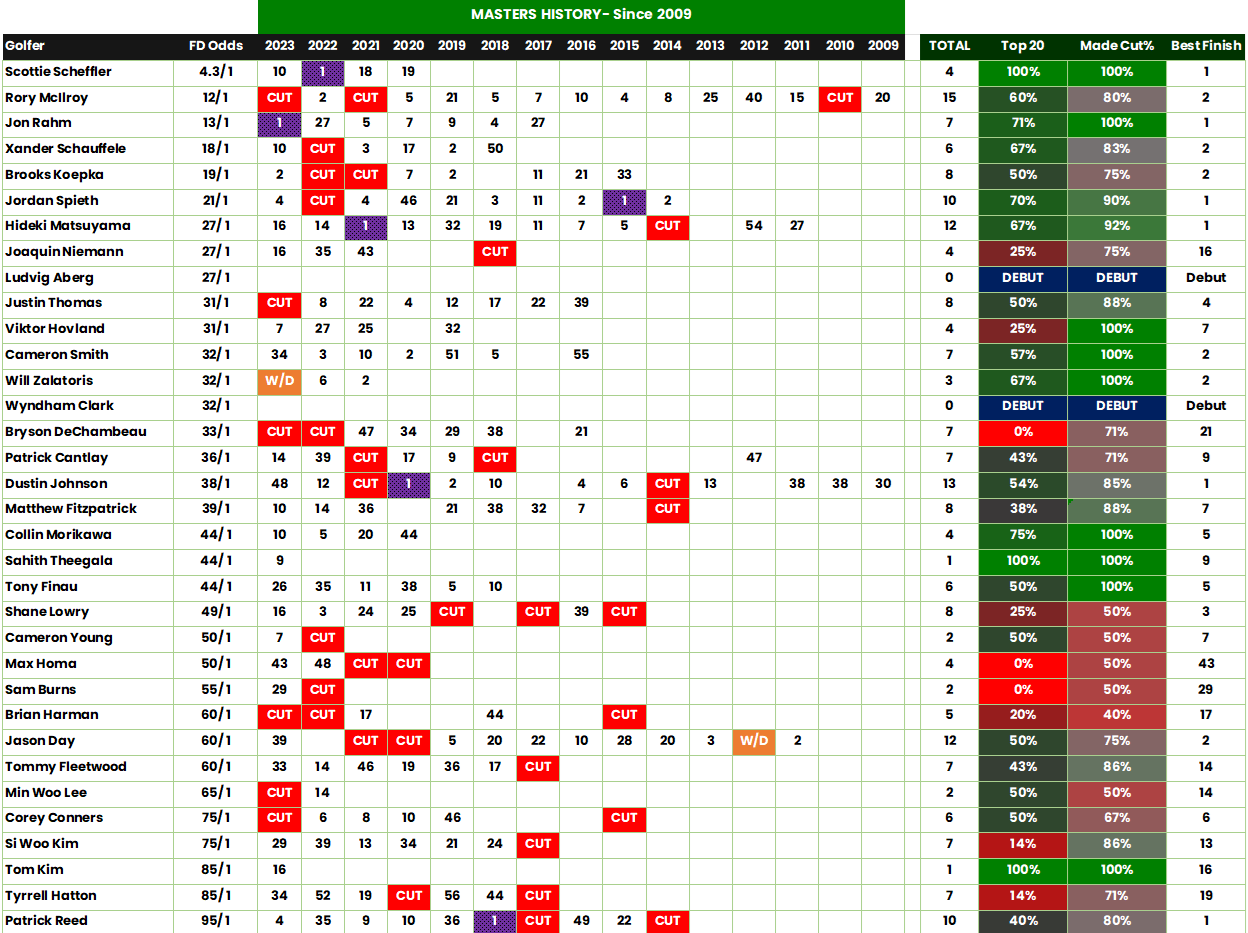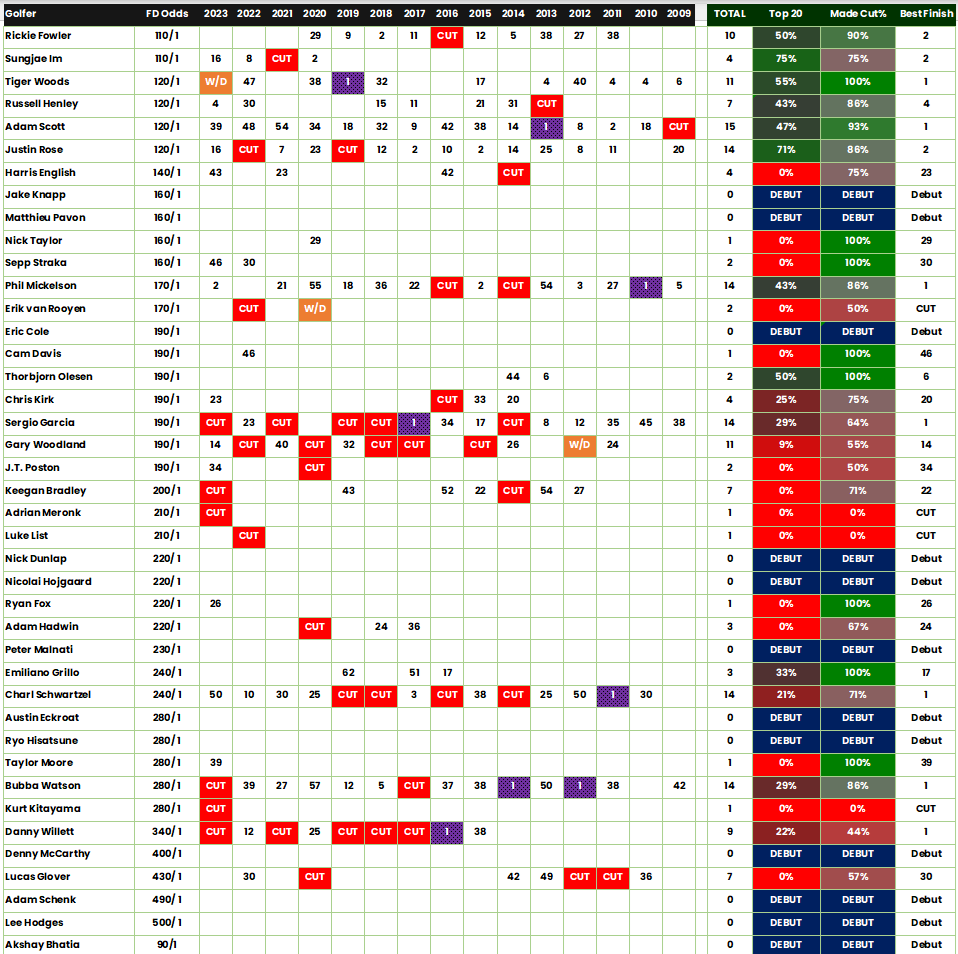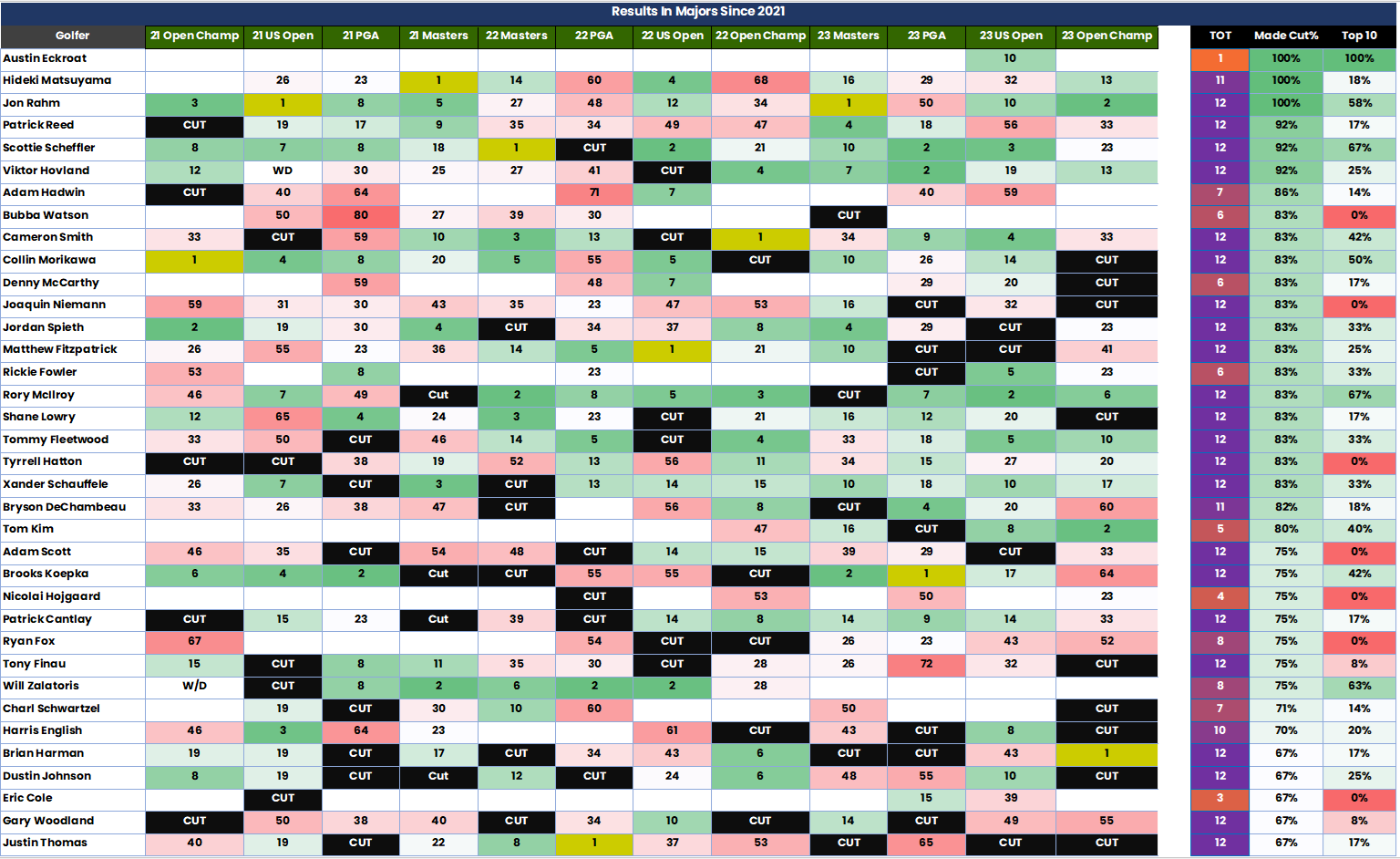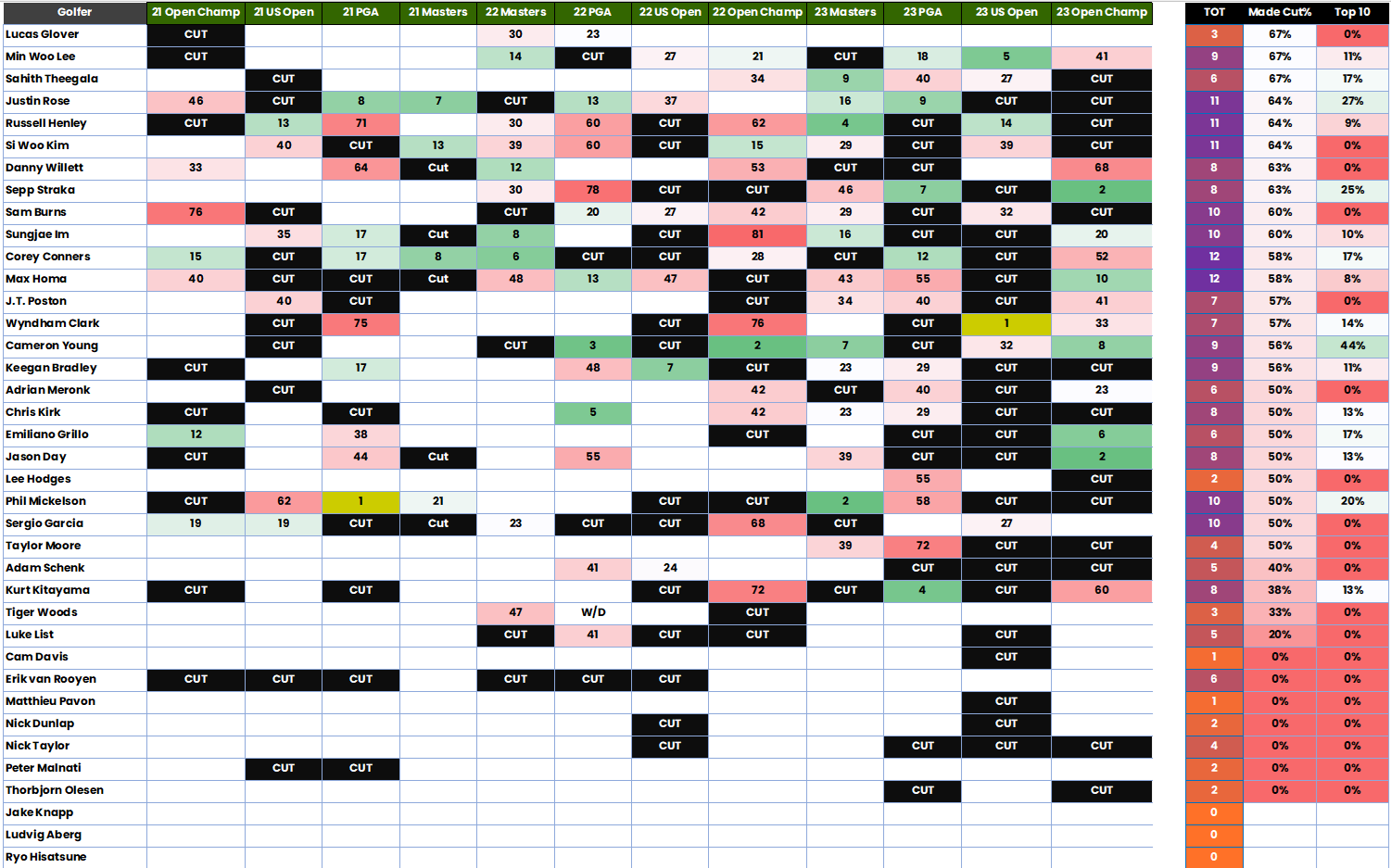2024 MASTERS TOURNAMENT
Overview: This page will take you through a variety of trends, stats and data that historically has been effective in predicting success at The Masters. Similar to last year, it’s difficult to assess the LIV players in this field as there is limited data on their performance this season. I’d mainly bank on past form for the LIV guys in this field more than anything.
Course Details
Augusta National Golf Club, Augusta, Georgia
Par 72
Length: 7,545 yards
Greens: Bentgrass
Where historical Masters champions have come from and where last year’s champion, Jon Rahm, fit:
Every winner since 2010 has entered the Masters ranked in the top 30 of the Official World Golf Rankings (OWGR). Top 25 in 12 straight Masters (Rahm 3rd). Since 2017, among the non LIV players, only Dylan Fritelli (100th in 2020) and Lee Westwood (67th in 2016) finished inside the top 5 and entered the Masters outside of the top 45 in the OWGR.
15 straight Masters winners had a top 20 finish in one of their five prior pre Masters events. (Rahm won Genesis 4 starts prior)
Every winner besides Danny Willet in 2016 has come into the event ranked in the top 100 in driving distance, which is essentially tour average. This is important because Augusta plays longer than its stated yardage distance (Rahm 5th).
Because of the way Augusta is shaped and the location of the greens, the ability to hit high shots and land them safely on the green, while generating enough distance is of utmost importance. Each winner since 2010 has ranked inside the top 80 in the PGA’s distance to apex stat. (Rahm 32nd)
This is not a tournament to back a player making their debut as no debutant has won the Masters since 1979. Fuzzy Zoeller in 1979 is still the only debutant to win the Masters and experience is typically key. Here are some of the more recent elite players and their finishes in their debut at Augusta- Rahm: 27th, Morikawa: 44th, Speith: 2nd, JT: 39th, Fitzpatrick: Cut, Cantlay: 47th, Scheffler: 19th, Hovland: 32nd, Schauffele: 50th, Zalatoris: 2nd. So Spieth and Zalatoris are the only debutants to even finish inside the top 15 among the elites since 2015. On average, first time winners have played the event ~six times. Last year, Sahith Theegala was the highest finisher among the debutants at 9th.
Every winner since 2010 had finished in the top 40 at a prior Masters at least once. (Rahm 6 times prior).
Every winner since 2010 came into the Masters ranked in the top 100 in strokes gained on approach and only three players (Willett, Sergio and Schwartzel) ranked outside of the top 44. (Rahm 4th).
Putting is very difficult at Augusta and is difficult for most every player. That essentially neutralizes any advantage that a great putter would have over others that struggle. To put this in perspective, two recent winners- Hideki Matsuyama in 2021 and Sergio Garcia in 2017, are notorious for struggling in putting. Matsy ranked 166th in strokes gained putting heading into the Masters, and in fact, finished the weekend 23rd among the field in strokes gained putting and still won. Sergio was 193rd in putting heading into his winning Masters season of 2017. Will Zalatoris, Corey Conners and Cam Champ all finished top 10 here in 2021 and came into the event outside of the top 100 in SG putting . In 2022, Scheffler won while ranking 13th in SG putting and last year Rahm was just 22nd in SG putting en route to his victory. It’s hard to say just totally ignore putting stats but it’s hard to put much emphasis in trying to predict who will conquer those Augusta greens.
Being able to manage around the tricky greens of Augusta are always a key factor. 12 straight champions have a positive strokes gained around the green during the year of their Masters victory. (Rahm +0.367) 11 straight winners and 12 of the last 14 ranked top 55 in strokes gained around the green in the season of their victory (Rahm 13th).
The key almost every year is playing well from Tee to Green. Recent winners like Jon Rahm, Scottie Scheffler, Hideki Matsuyama, Dustin Johnson and Jordan Spieth are excellent from tee to green. In fact, 12 straight and 13 of the last 14 winners, have come into Masters week ranked inside the top 25 on tour in SG tee to green. *Note: Two winners (Willet in 2016 and Scott in 2013) only participated in two (Willet) and three (Scott) PGA events that season prior to the Masters and were not on the official stat rankings. But in their limited events, both ranked #1 in the field in T2G heading into the Masters. (Rahm 3rd). Each of last year’s top 6 finishers finished inside the top 13 for the week in strokes gained Tee to Green.

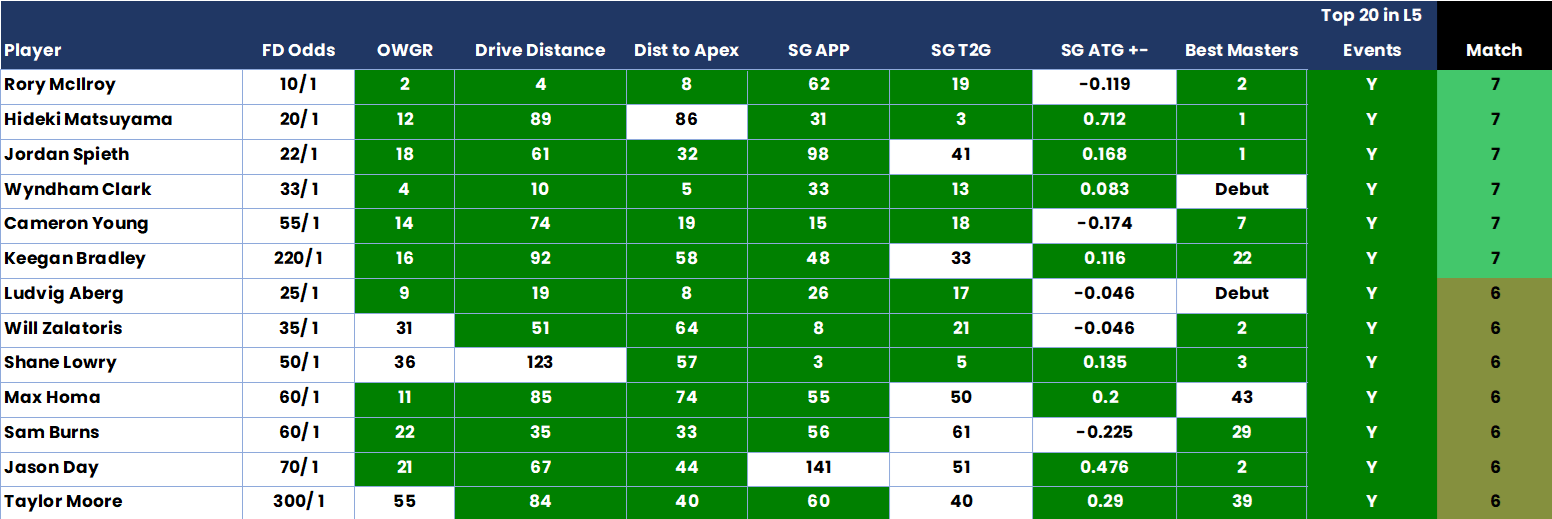
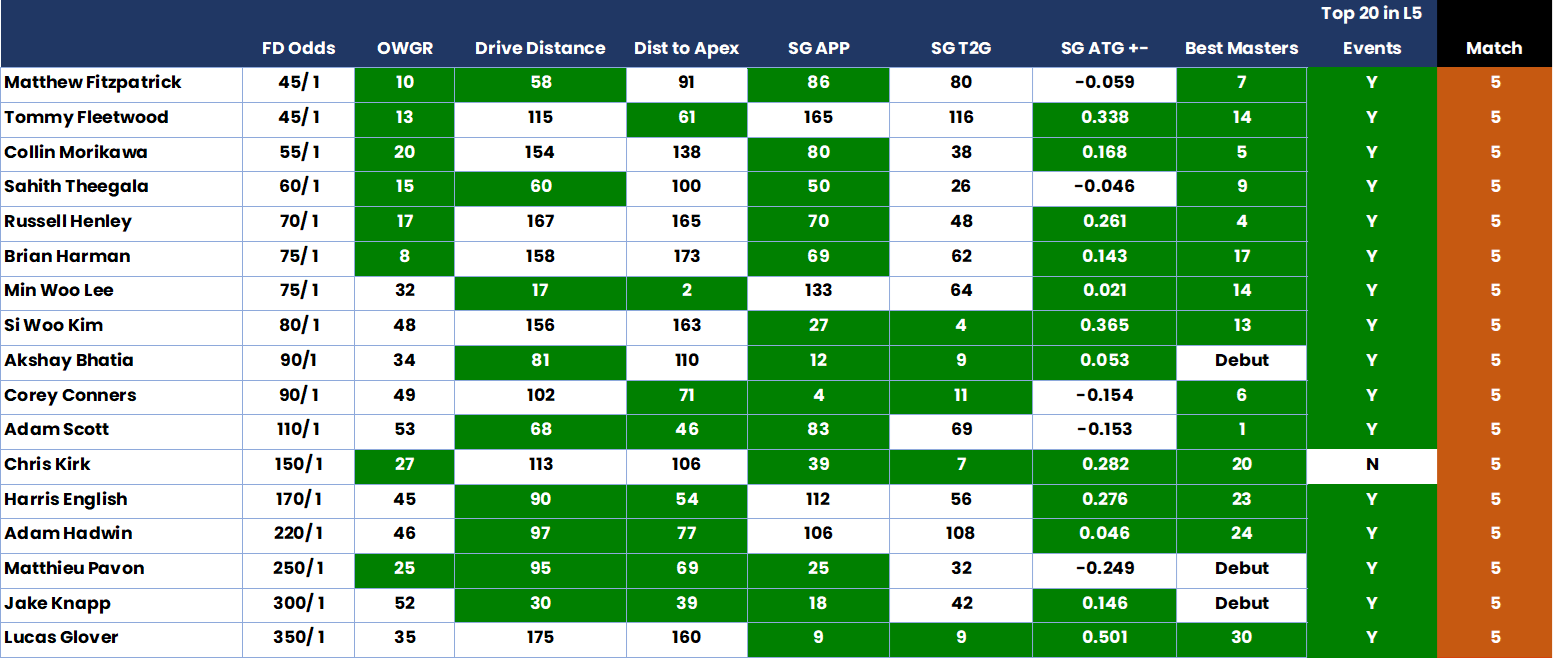
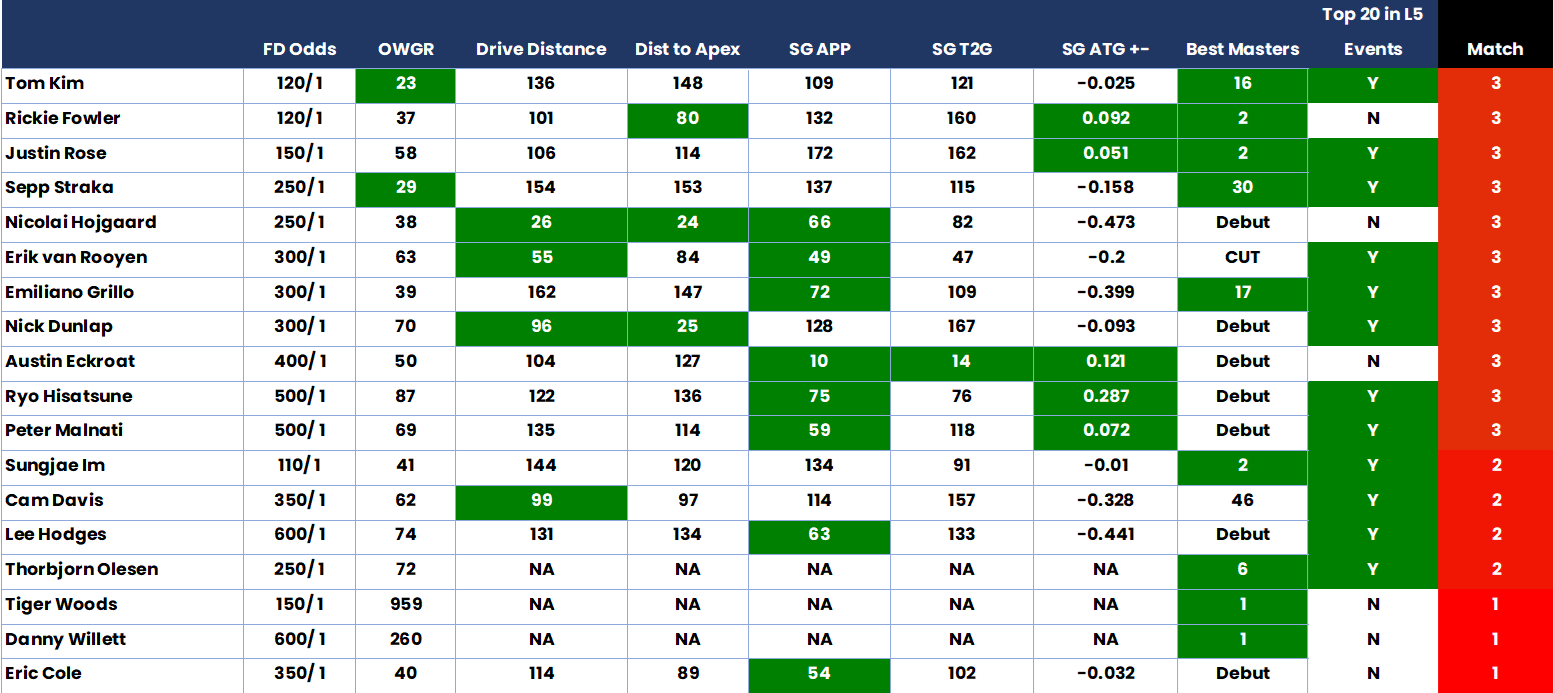
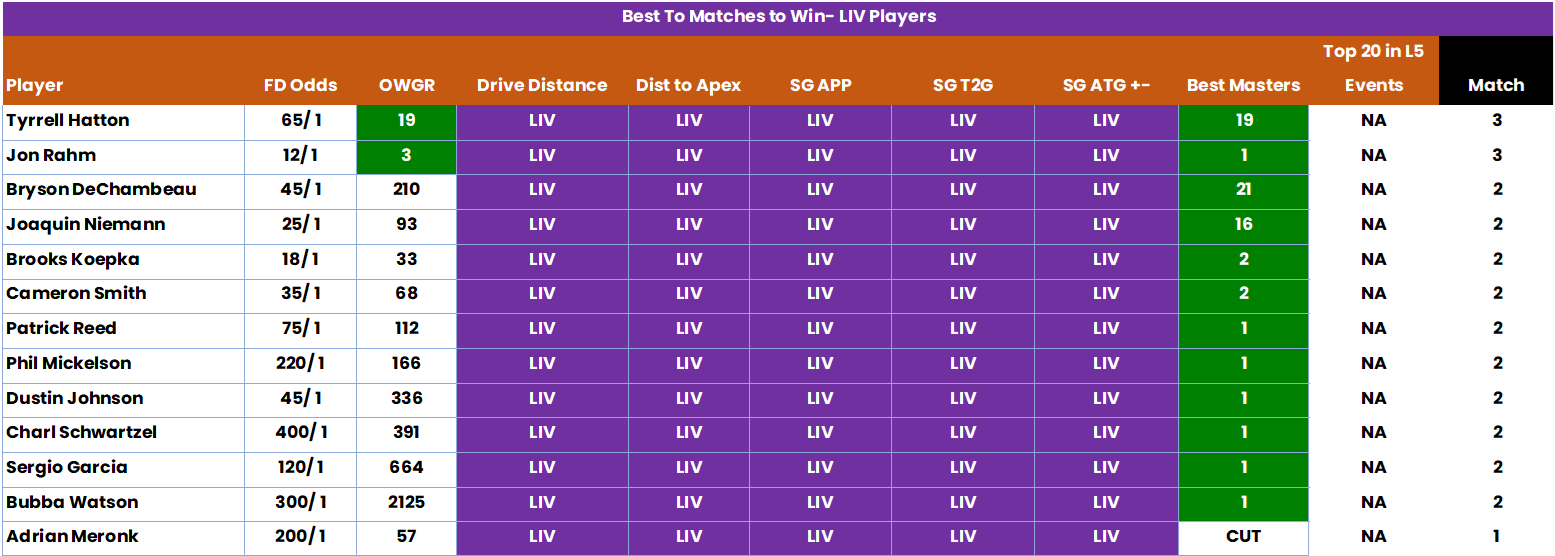
Top 10 Candidates:
What are the traits/qualities that are best to evaluate when trying to find golfers to place in the top 10 at the Masters?
For the last few years, I have used a classification decision tree to help best predict the likeliest top 10 finishing candidates. The idea of a classification tree is to split golfers into groups where each group has similar traits. In this case, we are looking for the characteristics of past golfers who have finished in the top 10 at the Masters. Based on the available data that I have been able to track for a number of years, I was able to build a classification tree with all golfers who finished in the top 10 at the Masters since 2017 and characteristics that specific groups share.

